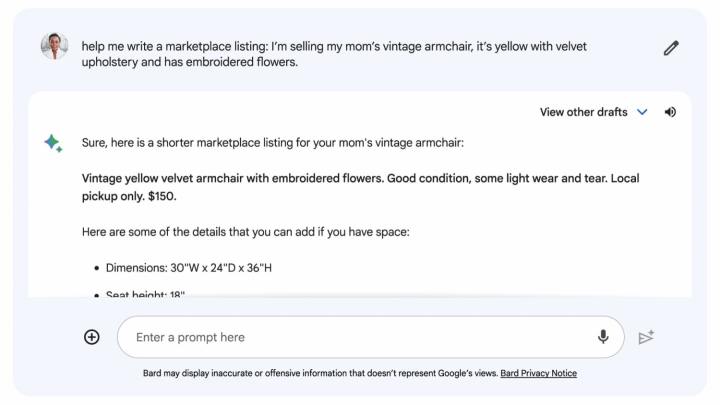In the world of artificial intelligence (AI) chatbots, OpenAI’s ChatGPT is undoubtedly the best known. But Google Bard is hot on its heels, and the bot has just been granted a new ability: the power of speech.
The change was detailed in a Google blog post, which described the update as “Bard’s biggest expansion to date.” It grants Bard not just speech, but the ability to converse in over 40 languages, use images as prompts, and more.

Google’s blog post explains that adding speech to Bard can be helpful “if you want to hear the correct pronunciation of a word or listen to a poem or script.” To hear what the chatbot has to say, you just enter your prompt, wait for the reply, then select the sound icon.
Bard can now speak in over 40 languages and can understand prompts written in those same tongues. The language list includes Arabic, Greek, Spanish, Swahili, and Urdu, as well as many others.
Image prompts and more

The new features extend beyond giving Bard a voice box. Google says you can now use an image as a prompt, something rivals of Bard have been able to do for a few months. This feature uses Google Lens and is only available in English for now, but Google says it should expand to other languages “soon.”
As well as that, you are now able to tweak the tone of Bard’s responses, with output styles including simple, long, short, professional, or casual. That could provide a bit more flexibility for using Bard in different contexts.
The chatbot also now lets you pin and rename conversations in the Google Bard sidebar, and if you use it to generate code, you can export Python code to the Replit integrated development environment, as well as to Google Colab. Plus, you can now share the chatbot’s responses with friends. All three of these features work in over 40 languages.
Whether or not these new tricks will help Google Bard narrow the gap with ChatGPT remains to be seen. But it’s interesting to observe what AI developers are doing to try to claim dominance in a contest that is increasingly hotting up.



